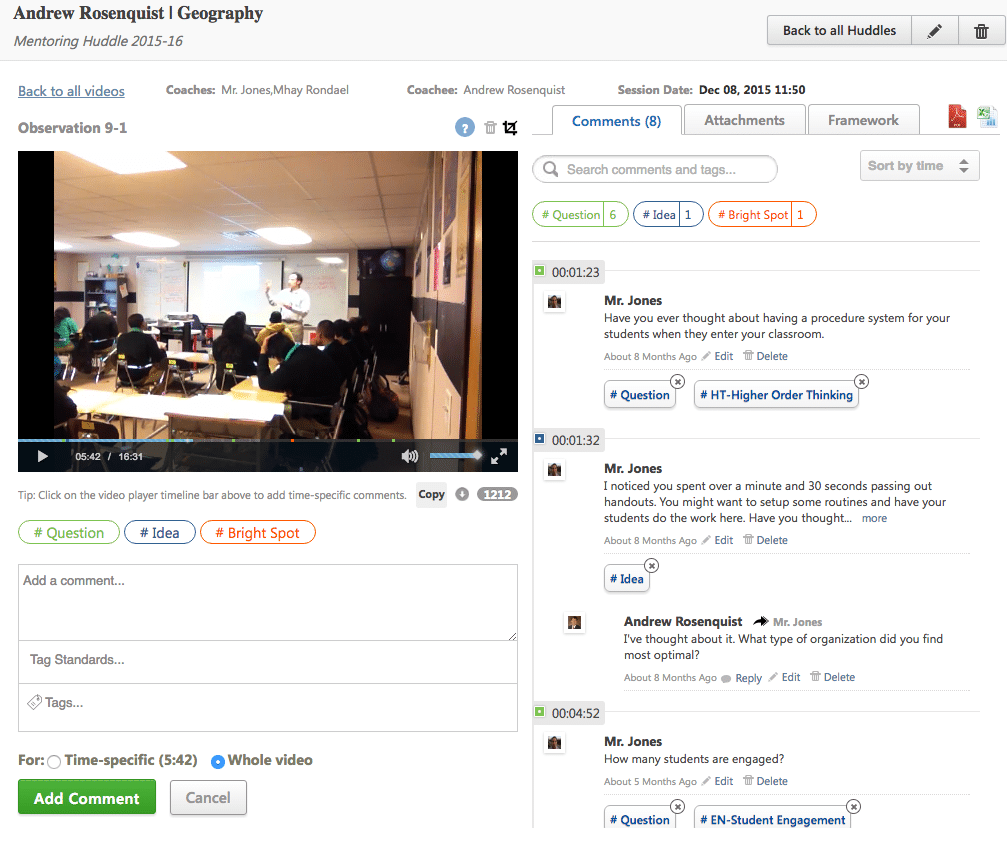3 Reasons Why I Coach My “Future” Teachers with Video
After 30 years teaching in public schools, and another five as a national educational consultant traveling the country, I thought that my best teaching days were behind me. Not so. For the past couple of years, I have worked as an adjunct professor in the Urban Education Department of a university in Houston where I teach students preparing to become teachers in their own classroom. I feel an intense pressure to make certain that my students are better prepared on their first days of teaching than I was—and in order to do this, I have had to make some changes to ensure that my best teaching days aren’t those that are behind me (as I once thought), but those that are ahead of me. How do I do that? I use video.

Reason #1 – I use video to provide students with models
I once heard an educational consultant say that before we ask students to be “producers,” we must first allow them to be “consumers.” So, before I ask my college students to “produce” a mini-lesson in front of their peers, I allow them to be “consumers” of mini-lesson that others have taught in previous semesters. Because I have recorded and stored mini-lessons from past semesters, I have a video library of model lessons at my fingertips. I whole-heartedly agree with well-known educational author Elaine McEwan-Adkins when she states that we must “show students what to do, not just tell them what to do.”
Reason #2 – I use video to provide better feedback
Experimentally, last semester I allowed my students to make a choice as to how they wanted feedback on the mini-lessons they would teach. They could choose to have their lessons filmed and stored in a “collaboration” huddle in Sibme, the technology platform I use. Once there, I would make time-stamped feedback at precise moments in the video where students either earned praise or needed gentle guidance. The alternative was to teach the lesson without being filmed and have me provide written feedback. The class was pretty evenly divided in terms of how they chose to receive feedback. A day or two into the experiment, I realized that I had made a big mistake. My purpose for providing feedback is to help students improve, and the written feedback I scrawled on paper was not nearly as effective as the time-stamped feedback I provided with the video. My take-away? Video makes every moment a teachable moment. Choice is only good when the two options are of equal value.
Reason #3 – I use video to provide students with an educational gift
Rick DuFour of PLC fame likes to joke that the only thing most teachers have in common is the parking lot. Tomorrow’s successful teachers will need to be collaborators who share more than a parking lot and who realize that their potentially greatest teachers as they enter the profession will be their colleagues. So, my “gift” to my students is to invite them into a collaboration huddle in my Sibme account where I will store their mini-lesson videos, complete with my time-stamped feedback. Before they even start their first day of teaching, they have 25 or so amazing mini-lessons—a library of lessons—from their classmates.
More Work to Do
Ironically, I am able to confidently share my convictions on the power of using video to enhance my professional practices in a blog—but not with my professional colleagues. I did try once, but after getting a luke-warm response, I retreated back to my classroom, closed the door, and continued to use what I consider to be the tool that contributes most significantly to my “future” teachers’ success—video. Looks like I have more work to do with my colleagues!
Allyson Burnett is an educational consultant and adjunct professor in the Houston area.

